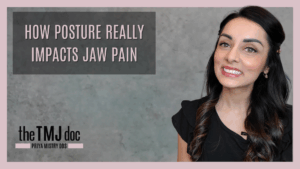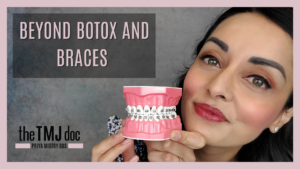If you suffer from Temporomandibular Joint Disorder (TMJD), you may have been told that surgery is the only option for relief. However, the truth is that most cases of TMJD can be effectively treated without surgery! In fact, non-invasive and holistic approaches are often the preferred first-line treatments, offering long-term relief without the risks of surgical intervention. Let’s explore how TMJD can be managed and treated non-surgically.
Why Avoid Surgery for TMJD?
While TMJ surgery is sometimes necessary for severe joint damage or structural abnormalities, it should generally be considered a last resort. Surgery comes with potential risks, including:
- Long recovery periods
- Permanent changes to jaw function
- Potential for ongoing pain or complications
Fortunately, non-surgical treatments have a high success rate, especially when addressing the root causes of TMJD.
Non-Surgical TMJD Treatment Options
1. Custom Oral Appliances (Splints or Nightguards)
One of the most effective ways to manage TMJD is with a custom-fitted oral appliance. These devices help by:
- Aligning the jaw in a more comfortable position
- Reducing clenching and grinding (bruxism)
- Minimizing stress on the jaw joint
2. Myofunctional Therapy & Tongue Posture Training
Proper tongue and jaw posture play a crucial role in TMJ health. Myofunctional therapy focuses on retraining oral muscles to:
- Promote nasal breathing instead of mouth breathing
- Support proper jaw alignment
- Reduce tension in the facial muscles
3. Trigger Point Therapy & Jaw Muscle Relaxation
Tight jaw muscles contribute significantly to TMJ pain. Techniques such as:
- Trigger Point Injections for muscle relaxation
- Manual massage and stretching exercises
- Cold and heat therapy to relieve tension can help restore normal jaw function.
4. Lifestyle and Habit Modifications
Certain lifestyle habits can aggravate TMJD. Making adjustments like:
- Avoiding hard or chewy foods to reduce strain on the jaw
- Correcting poor posture to prevent added pressure on the jaw
- Managing stress through relaxation techniques (meditation, yoga, or deep breathing) can make a significant difference in symptom relief.
5. Breathing Retraining
Many TMJD sufferers unknowingly breathe through their mouths, which contributes to jaw misalignment and tension. Breathing retraining focuses on:
- Strengthening nasal breathing habits
- Correcting tongue posture for proper airway support
- Reducing jaw strain over time
6. Neuromuscular Dentistry Techniques
Using advanced jaw tracking technology, dentists like Dr. Priya Mistry, The TMJ Doc, can assess bite alignment and optimize jaw function using gentle, non-invasive interventions.
Why Non-Surgical Treatment Works
The key to successful non-surgical TMJD treatment is identifying and addressing the root causes, rather than just managing symptoms. Dr. Priya Mistry has helped countless patients achieve long-term relief through a comprehensive and personalized approach that avoids the need for surgery.
Final Thoughts
If you’re struggling with TMJD, surgery is not your only option. With the right combination of oral appliances, muscle therapy, posture correction, and lifestyle modifications, you can find significant relief without going under the knife.
For expert non-surgical TMJD treatment, reach out to Dr. Priya Mistry, The TMJ Doc, and start your journey toward a pain-free life today!







